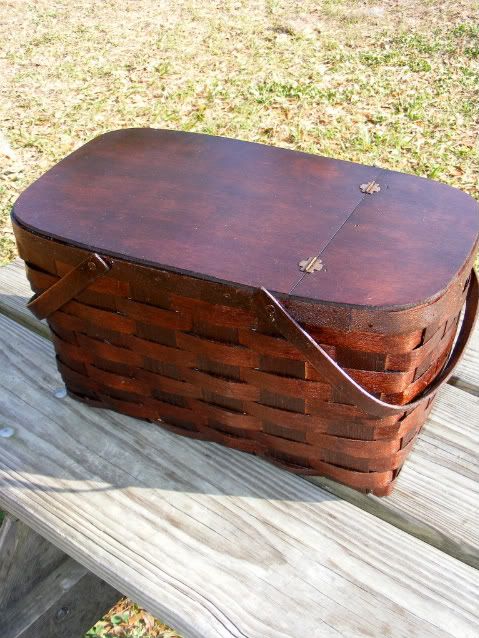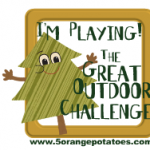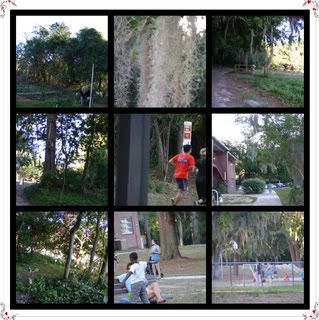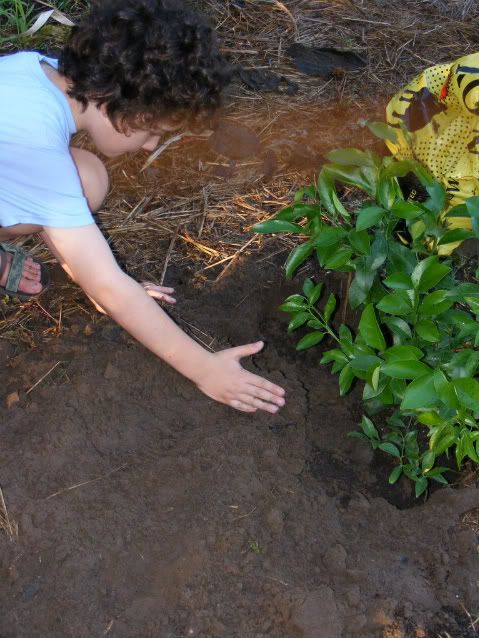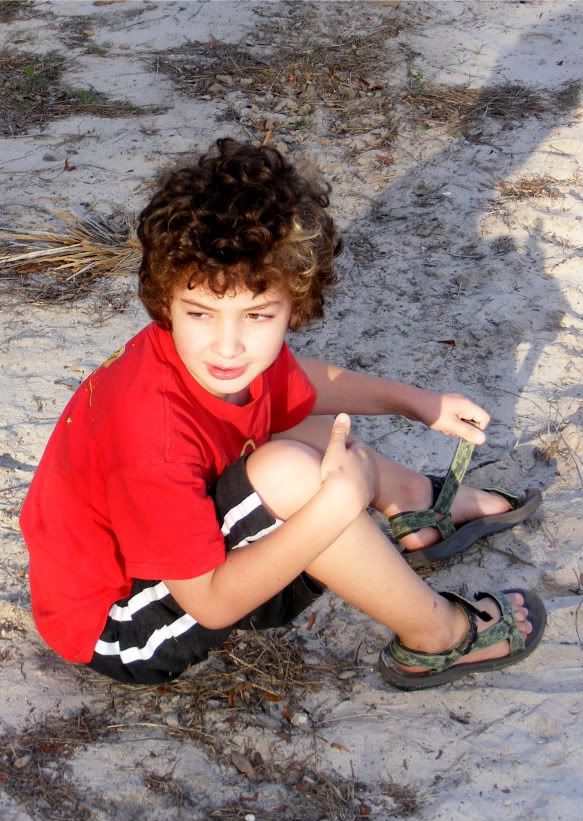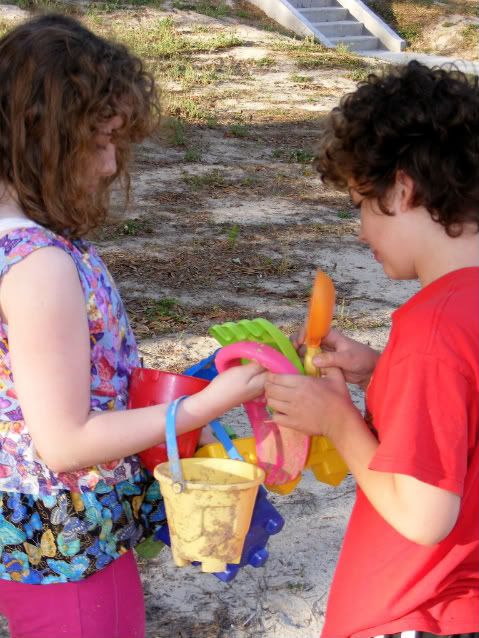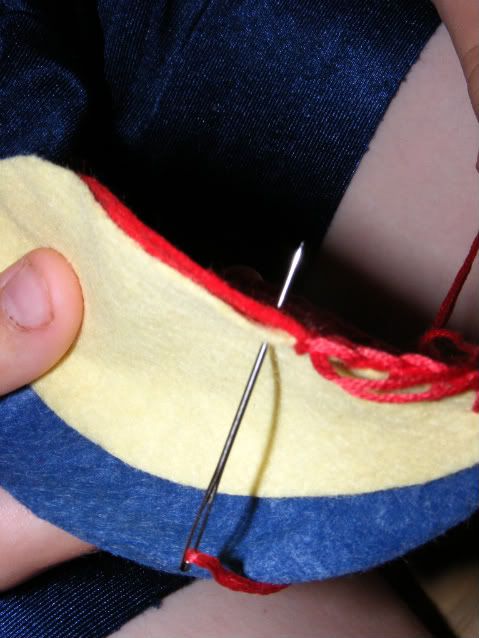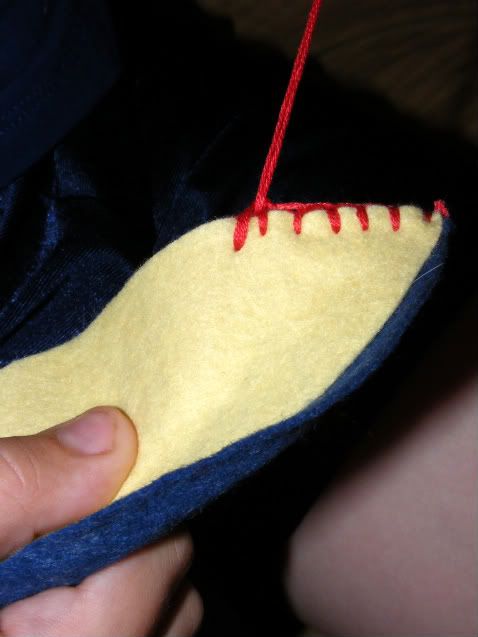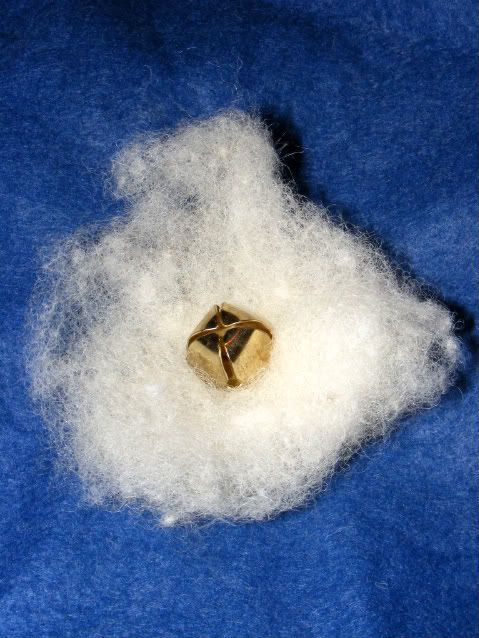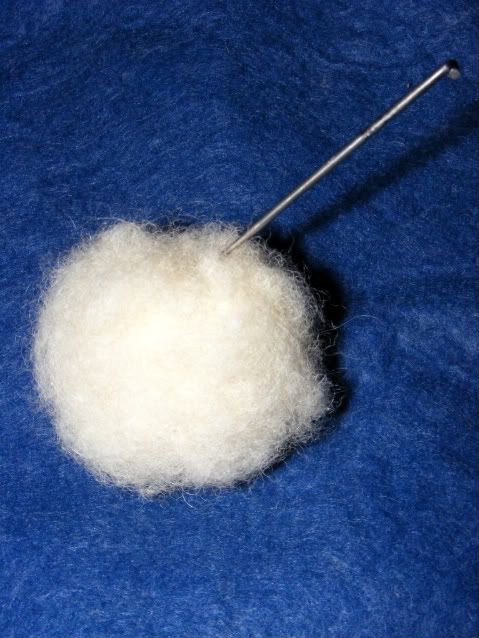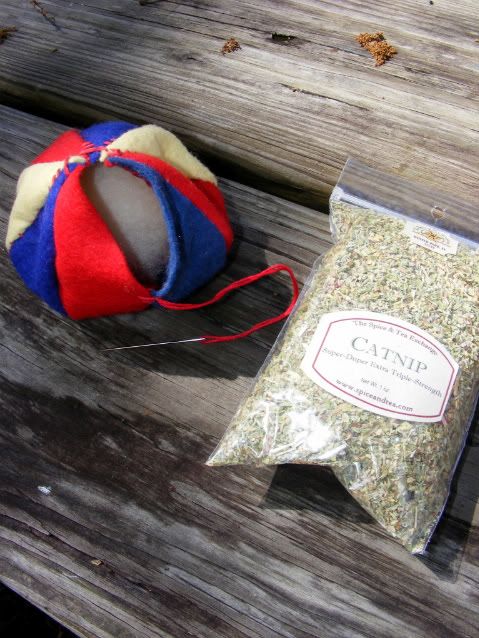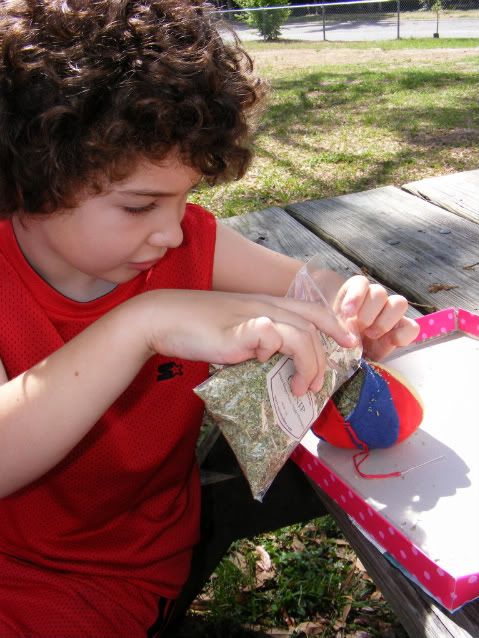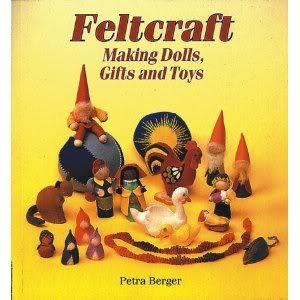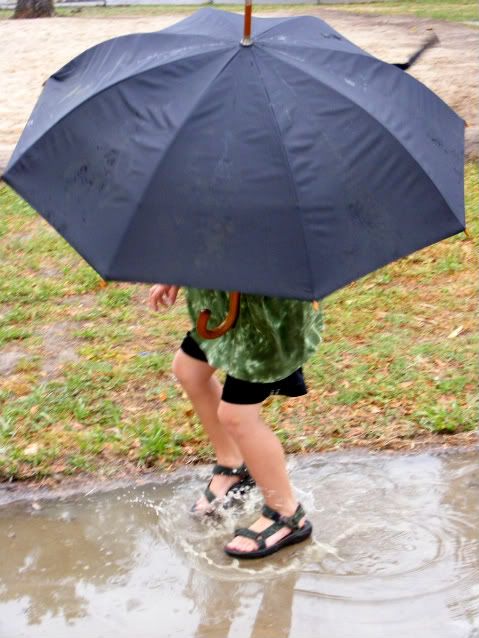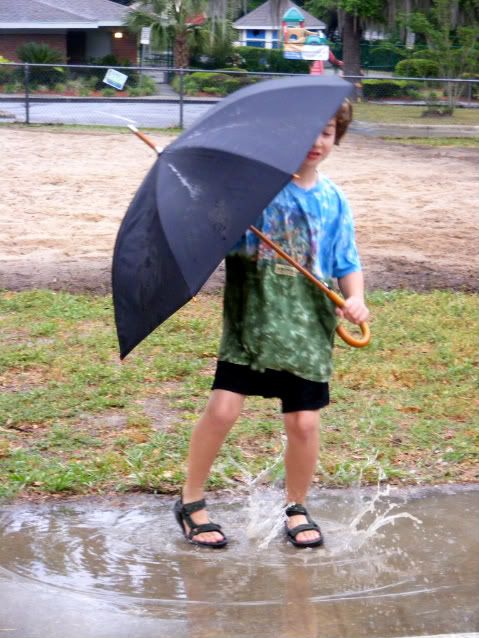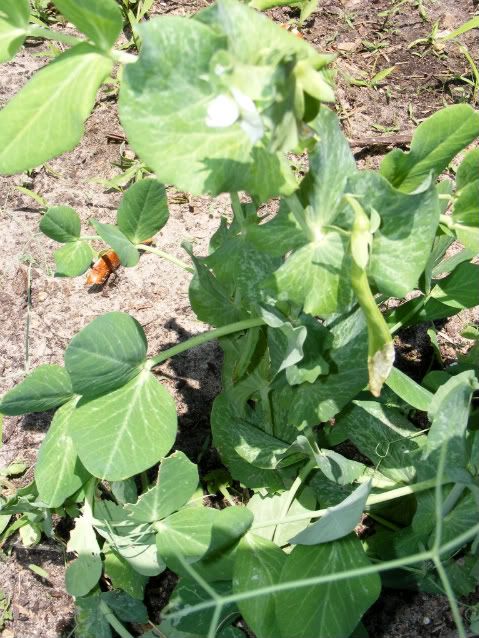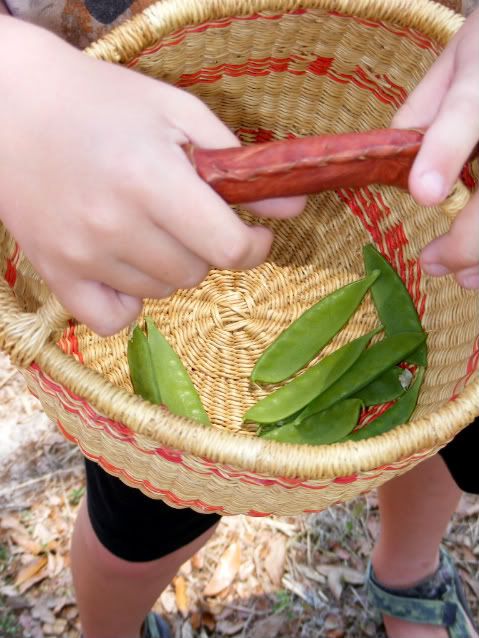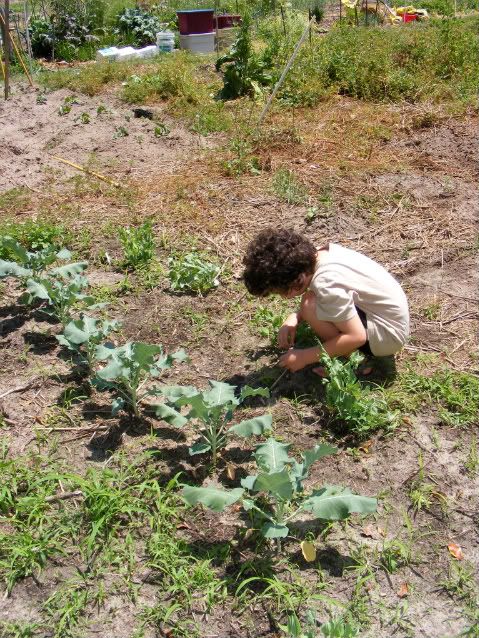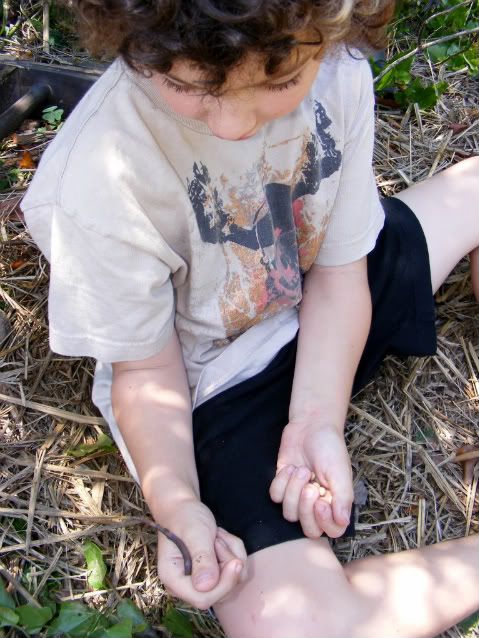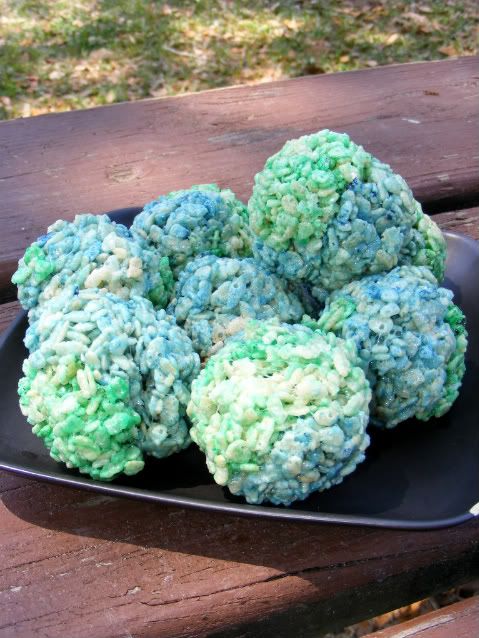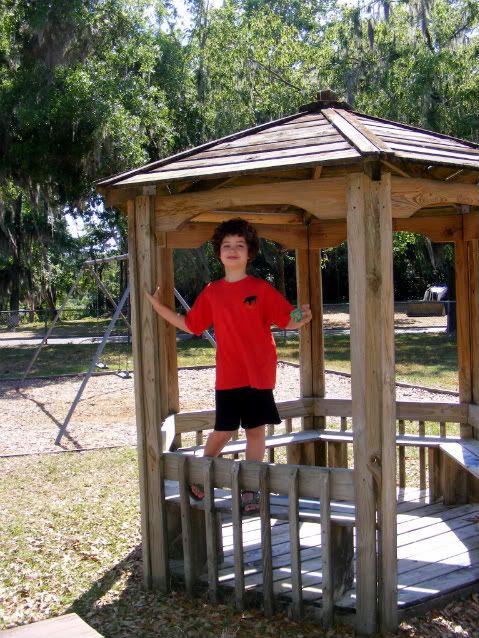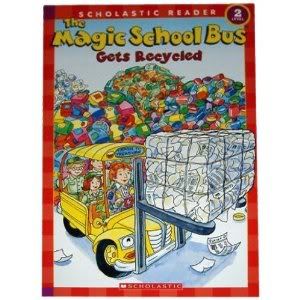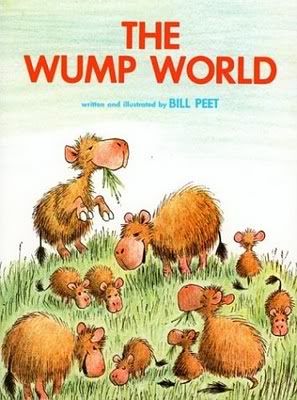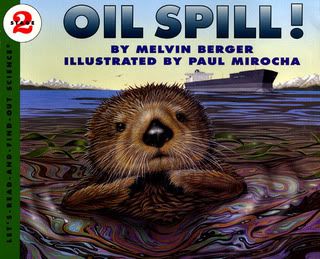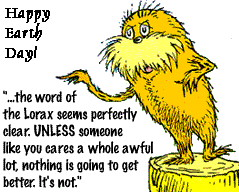My project for this past week, was fixing up an old, dull picnic basket that I purchased from the Haven Hospice Resale Shop.

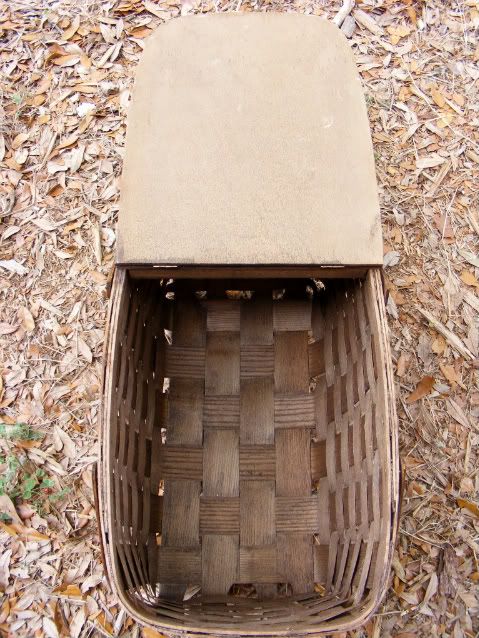
I started with the outside of the basket. It's amazing what a difference a little color can make!
I still have some left-over Red Mahogany Minwax Wood Finish and Fast-Drying Polyurethane, from the footboard I built for Blaze's bed, back in December, so I used that to give the basket a deep, rich color.
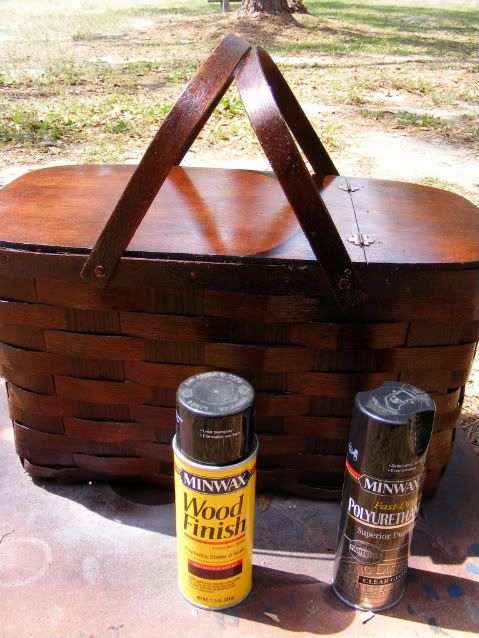
Then I made a padded liner with pockets for storing dishes and utensils.
For the liner, I made my own pattern by tracing the bottom of the basket and adding an inch all around as a seam allowance.
The basket liner required 2 yards of upholstery fabric, some quilt batting, and a 1 yard long strip of velcro.
Using that pattern, cut out two pieces of upholstery fabric. Then trim the pattern down to it's pre-seam allowance size and cut out a piece of quilt batting.
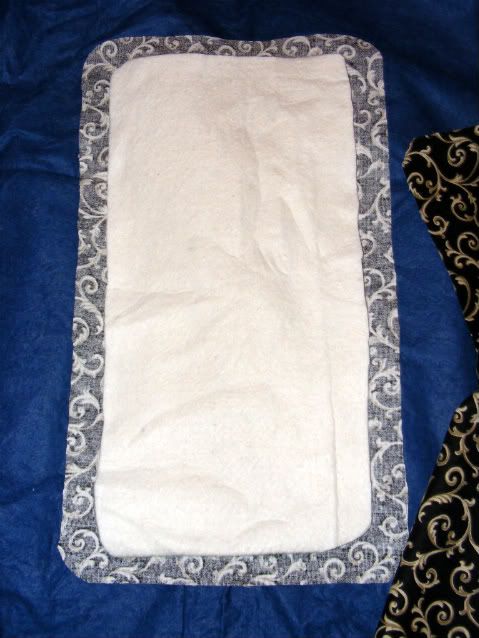
The batting was placed between the two pieces of fabric, with the right sides (printed sides) facing out. A seam was then sewn along the edge of where the batting could be felt through the fabric.
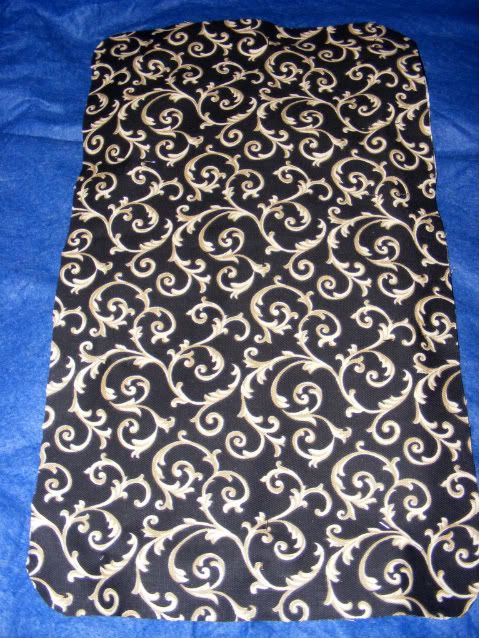
The sides of the liner are made by measuring the basket along the top edge and around the bottom. When making the pattern, add the 1-inch seam allowance to the bottom and sides of the pattern, but not to the top. The top of the pattern will be placed along a fold in the cloth, so that the top of the liner has a cleaner look when finished. Cut off the seam allowance to make the pattern for the batting. To hold the fabric and batting together, sew a seam along the top, the width of the basket rim ( this will help you see where to place the velco later.
The pockets require the most measuring, even though they are made from a single strip of fabric that is almost as long as the piece that makes up the sides of the liner. Utensils will need pockets that are 2 inches wide. Pockets for plates are the width of the plate plus 1-inch. For the height of the pockets, measure about 2/3 up the side of the basket liner's side panel and add enough to that measurement so that a top hem can be made.
After the pockets have been added to the side panel, pin the ends of the side panel together so that the pockets are on the inside and sew. The sides should now be a circle which can be pinned to the bottom panel.
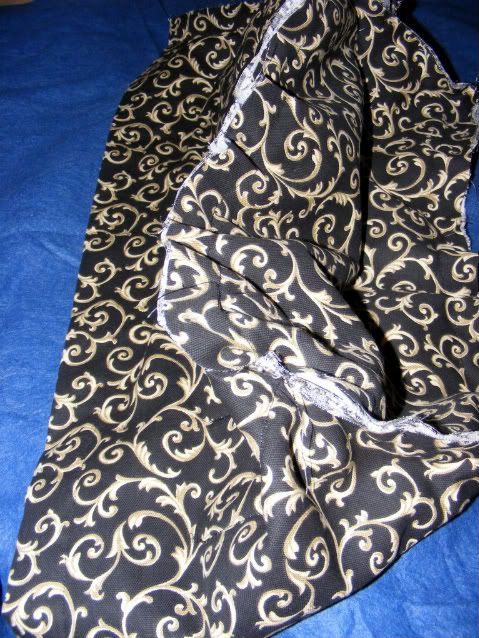
Sew the bottom to the sides.
Next, use strong glue to attach one side of the velco strip to the inside edge of the basket.
I used Gorilla Glue, only because it was handy at the time, but I now regret that choice. It puffs up as it dries and makes quite a mess. Also, it ended up all over my fingers and wouldn't wash off, so I just had hold my fingers apart while it dried. Two days later, no one else can really tell I have glue on my fingers, but I can still feel it.
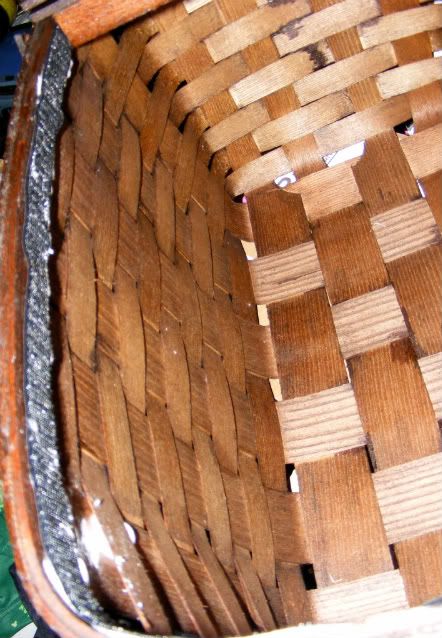
Let the glue dry over night. The next day, place the liner in the basket and position it properly. Mark where the velco should be attached to the outside edge of the liner. Remove the liner from the basket, pin the velco in place, and sew.
The liner is now finished and can be velcoed into place inside the basket.
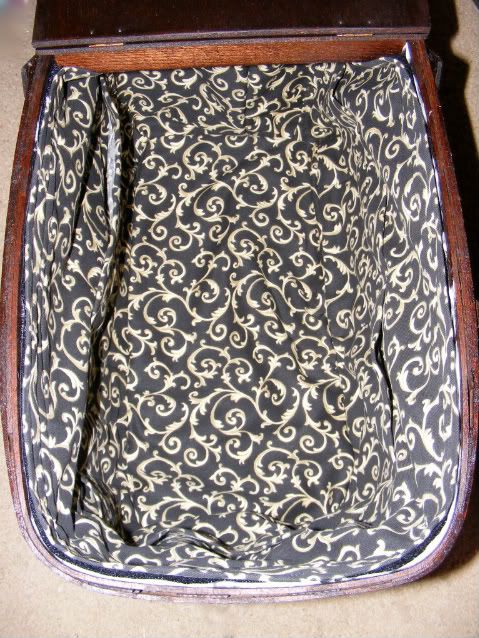
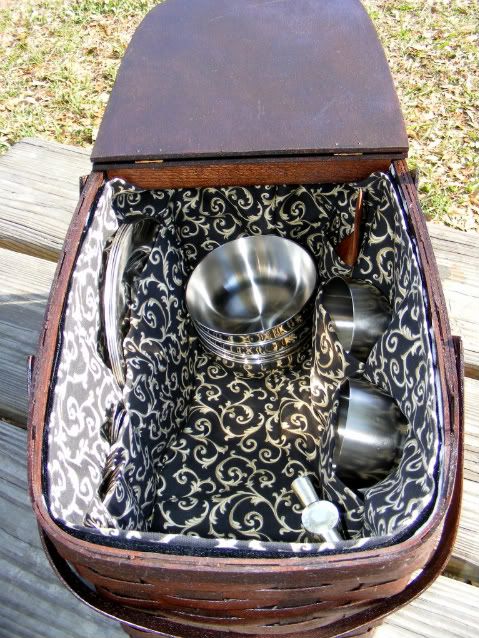
I still think the outside of the basket needs some kind of decorative touch, but I'm not sure what. Does anyone have any suggestions?
